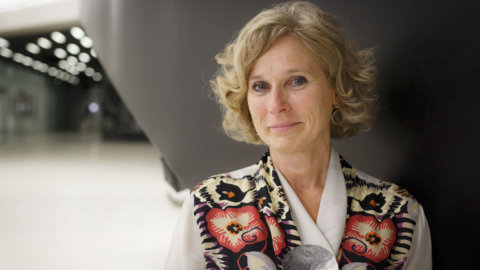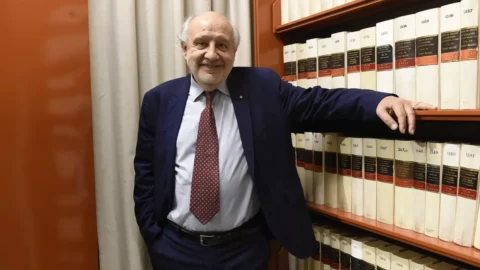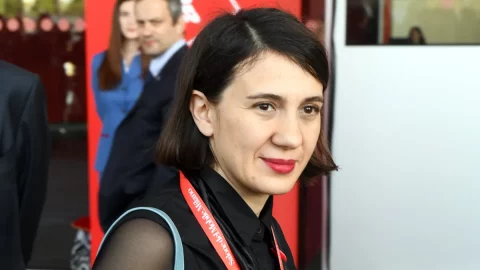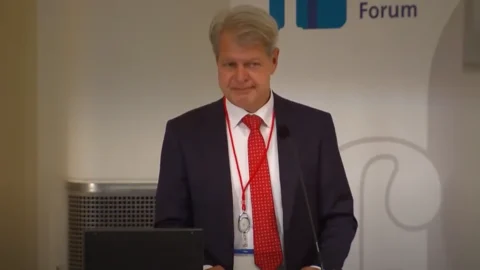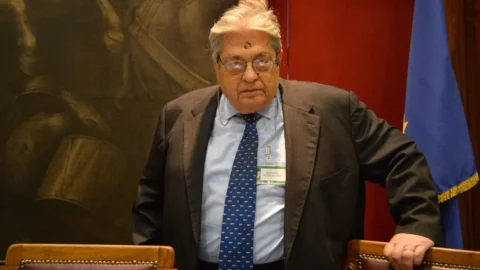“The Maxxi is not yet the Tate Gallery but this is a challenge we can win”. Giovanna Melandri aims high, strengthened by the confirmation she has just obtained at the helm of the Maxxi Foundation, the institution that governs the National Museum of XXI Century Arts, and strengthened, above all, by the results achieved during the first mandate: visits doubled, a 37,5% increase in self-financing (between tickets, sponsors and donations), a doubled budget and a volcanic activity that ranges from exhibitions to workshops, from cinema to talks with artists, from school-work alternation for students to involve the weakest sections of the public. A growth that dissolved the controversies that greeted her arrival at the end of 2012 when she was appointed by the Monti government. And now you look at the USA as well as Africa, you plan a branch in L'Aquila and prepare the new exhibitions for 2018. We talked about it in this interview with FIRSTonline, here's what you told us.
Giovanna Melandri, the Maxxi is no longer a startup: since 2013 it has exceeded 1,7 million visitors, set up 114 exhibitions, attracts partners and sponsors such as Enel, Bulgari, CDP, Groupama, Alcantara, Deutsche BanksSky Art Hd. What is the key di these results?
“The particularity of Maxxi lies in these two guidelines: on the one hand the governance model, on the other the cultural identity of this institution. We are the museum of contemporary art in a country like Italy, open to the Mediterranean, permeated by the highest tradition of classical art and which for many years had not thought of creating a place dedicated to the contemporary”.
He talks about it like a son…
“In a way it is. It was the governments of the Olive tree (ministers of culture Veltroni and Melandri herself, ed) to propose its birth and want to entrust it not to a state body but to a private law foundation, supervised by the Mibact but with the flexibility and ambition to also operate with private resources. That intuition turned out to be right and I think it would also do good for other Italian museums. The reform launched by Minister Dario Franceschini was very important”.
Let's talk about resources Maxxi: are sufficient in a world where the great Has it reached very high prices?
“When I arrived here, thanks to ministers Ornaghi and Bray, state funding was doubled and stabilized at 6 million. The first work therefore concerned the consolidation of public resources. This is the first pillar because economic sustainability is essential for involving private individuals. The partners, such as Enel, arrived when the commitment of the state became clear. Together we grow or perish. We can now count on a 12 million public and private budget, which in 2018 will rise to 14 with the allocation for the new headquarters in L'Aquila. We will also have 1 million more for purchases of works and that is important. Sure, the Tate has a budget of over £100m, the Beaubourg over €100m. With these numbers it is impossible to compare, but it is a challenge that we can take up and I also trust in the willingness of the next governments to expand resources".
With her the "team" of directors was confirmed, starting with Hou Hanru.
“His arrival at Maxxi as artistic director was another significant milestone and projected us onto an international circuit. To make a project like this travel, well-known curators were needed, as are also Margherita Guccione and Bartolomeo Pietromarchi who head the architecture and art departments, respectively. Now we produce exhibitions with New York MoMA, London Barbican, Seoul, Beijing and Shanghai Museums. We have established our reputation with a quality team and strong exhibitions. It's a job that's not finished yet. The other fundamental lever was that of gratuity”.
Can you explain what you mean? The Maxxi it had 430.000 admissions last year but "only" 120.000 paying admissions. Is there anyone who looks at these numbers with some skepticism?
“I would like to get out of a certain tyranny of numbers because it risks making us lose the social and cultural impact of a complex institution like this. At Maxxi we have embraced the logic of gratuitousness on the model of the Tate Gallery and I am proud of it. We are the only museum to open the collection for free, a choice that made me spend a few sleepless nights at first but then it worked. Because the many free activities - workshops, schools, events - that we offer without tickets thanks to the contribution of our partners and private sponsors, has been the engine that has not only increased visits but also revenues driven by quality exhibitions. We recorded a 17% increase in tickets last year, with collections of around 1 million on the over 5 that come from self-financing. An item that now covers almost 40% of the budget and which allows us to carry on innovative projects and to purchase new works – 47 in 2017 alone – expanding the collection with a not indifferent flywheel effect. This is why it is more important to talk about the number of visitors than the simple number of tickets".
What are the exhibitions that have had the most success and on what bets for 2018?
“It's always difficult to make this kind of classification because the MAXXI ticket gives you access to all the museum's contents. However I can say that exhibitions such as “Bellissima” on fashion or those dedicated to Letizia Battaglia, Zaha Hadid, Japan and Istanbul have been very successful in recent years. They are doing very well "Gravity" and "Home Beirut” which are still ongoing. For this year we have 10 new exhibitions on the calendar: we start from Nanda Vigo, immediately after we will have “Blackout” with the works of Jennifer Allora and Guillermo Calzadilla. I am pleased to mention the exhibition dedicated to Bruno Zevic beyond "Echo and Narcissus” created in collaboration with Palazzo Barberini. After the Iran-Istanbul-Beirut trilogy we will shift our gaze to Africa with “African Metropolis” in the middle of the year. At the end of the year I report "The Street” which will deal with urban restructuring and will remain open for six months".
The search for private capital, the so-called fundraising, it requires a lot of work...
“We acquired 1,7 million from private individuals with our own Acquisition Gala Dinner. I'm happy about it but I'm also aware that there is ample room for improvement. For example, tightening the relationship with our city which is going through a difficult and tiring moment. The increase in the public that we have recorded, in fact, is mostly due to young people and foreigners. On Rome we would like to aim to obtain a massive adhesion to the MyMaxxi Card, the subscription that allows entry for a year for 50 euros”.
And abroad?
“I expect a lot from American Friends of Maxxi. After a long journey, we are about to obtain recognition from the US taxman. This will allow us to expand the network of private donors who will be able to deduct their contributions from taxes".

